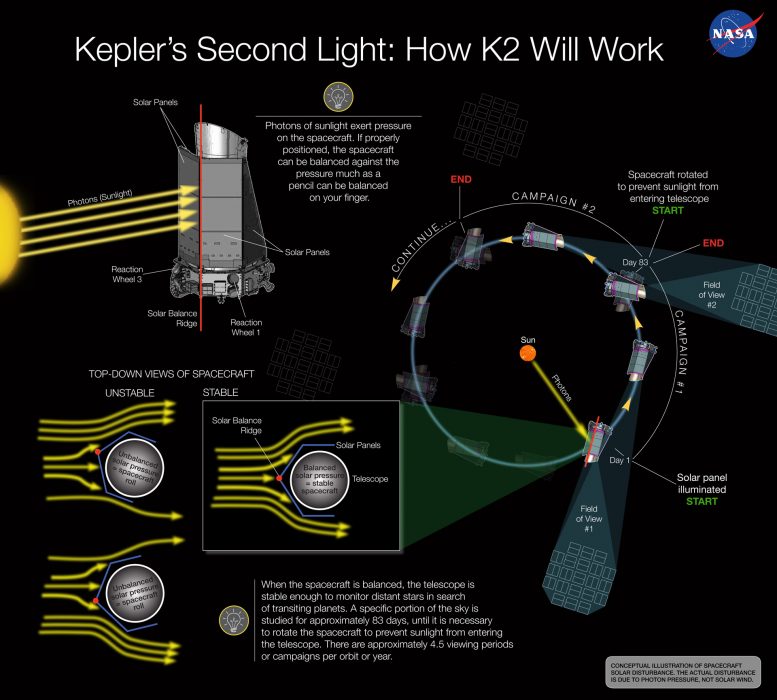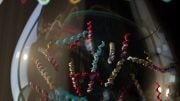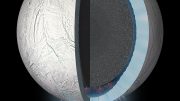
This conception illustration depicts how solar pressure can be used to balance NASA’s Kepler spacecraft, keeping the telescope stable enough to continue searching for transiting planets around distant stars. Credit: NASA Ames/W Stenzel
Kepler mission and Ball Aerospace engineers believe they have figured out how to get the Kepler Spacecraft working again. By maneuvering the spacecraft so that the solar pressure is evenly distributed across the surfaces of the spacecraft, they believe the Sun can as the ‘third wheel’ to control pointing.
You may have thought that NASA’s Kepler spacecraft was finished. Well, think again. A repurposed Kepler Space telescope may soon start searching the sky again.
A new mission concept, dubbed K2, would continue Kepler’s search for other worlds, and introduce new opportunities to observe star clusters, young and old stars, active galaxies, and supernovae.
In May, the Kepler spacecraft lost the second of four gyroscope-like reaction wheels, which are used to precisely point the spacecraft, ending new data collection for the original mission. The spacecraft required three functioning wheels to maintain the precision pointing necessary to detect the signal of small Earth-sized exoplanets, which are planets outside our solar system, orbiting stars like our sun in what’s known as the habitable zone — the range of distances from a star where the surface temperature of a planet might be suitable for liquid water.
With the failure of a second reaction wheel, the spacecraft can no longer precisely point at the mission’s original field of view. The culprit is none other than our own sun.
The very body that provides Kepler with its energy needs also pushes the spacecraft around by the pressure exerted when the photons of sunlight strike the spacecraft. Without a third wheel to help counteract the solar pressure, the spacecraft’s ultra-precise pointing capability cannot be controlled in all directions.
However, Kepler mission and Ball Aerospace engineers have developed an innovative way of recovering pointing stability by maneuvering the spacecraft so that the solar pressure is evenly distributed across the surfaces of the spacecraft.
To achieve this level of stability, the orientation of the spacecraft must be nearly parallel to its orbital path around the sun, which is slightly offset from the ecliptic, the orbital plane of Earth. The ecliptic plane defines the band of sky in which lie the constellations of the zodiac.
This technique of using the sun as the ‘third wheel’ to control pointing is currently being tested on the spacecraft and early results are already coming in. During a pointing performance test in late October, a full-frame image of the space telescope’s full field of view was captured showing part of the constellation Sagittarius.
Photons of light from a distant star field were collected over a 30-minute period and produced an image quality within five percent of the primary mission image quality, which used four reaction wheels to control pointing stability. Additional testing is underway to demonstrate the ability to maintain this level of pointing control for days and weeks.
To capture the telltale signature of a distant planet as it crosses the face of its host star and temporarily blocks the amount of starlight collected by Kepler, the spacecraft must maintain pointing stability over these longer periods.
“This ‘second light’ image provides a successful first step in a process that may yet result in new observations and continued discoveries from the Kepler space telescope,” said Charlie Sobeck, Kepler deputy project manager at NASA Ames Research Center in Moffett Field, California.
The K2 mission concept has been presented to NASA Headquarters. A decision to proceed to the 2014 Senior Review – a biannual assessment of operating missions – and propose for budget to fly K2 is expected by the end of 2013.
Kepler’s original mission, which is still in progress to fully process the wealth of data collected, is to determine what percentage of stars like the sun harbor small planets the approximate size and surface temperature of Earth. For four years, the space telescope simultaneously and continuously monitored the brightness of more than 150,000 stars, recording a measurement every 30 minutes.
More than a year of the data collected by Kepler remains to be fully reviewed and analyzed.









Really? This same thing happened to the Hubble. You think we would know better after this many years of experience.